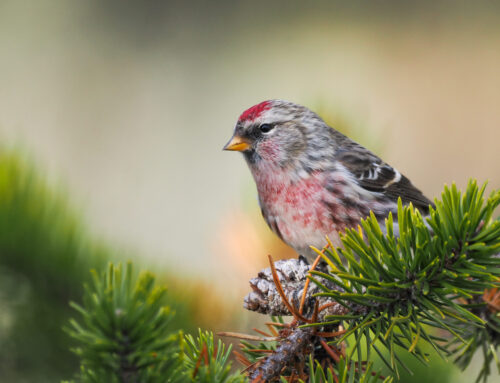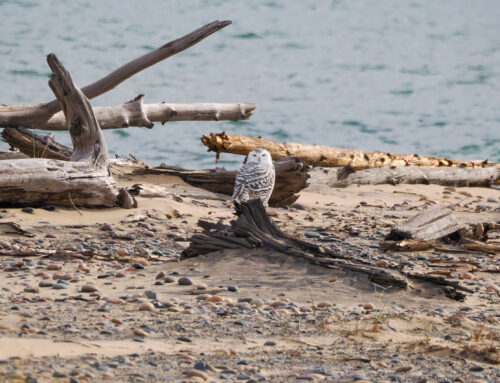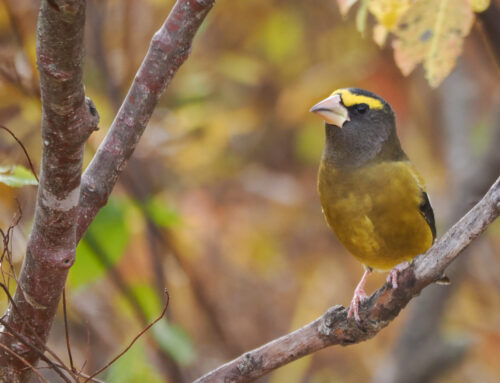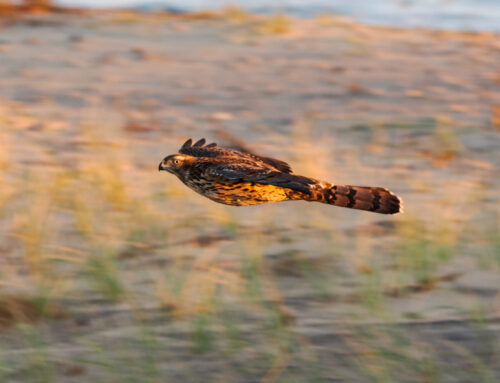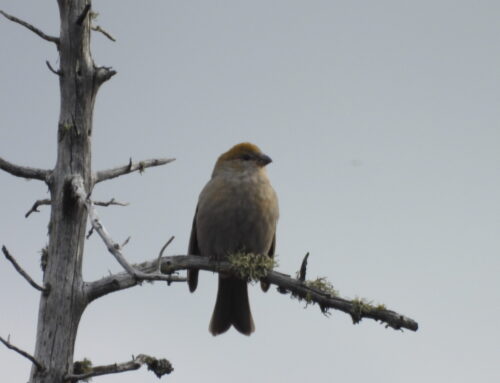Baby takes flight!
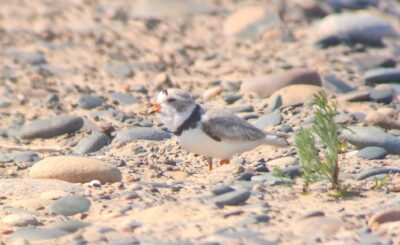
Little Bill Bob peeping to Baby. Photo by Stephanie Owens
On July 21, I observed Little Bill Bob with his chick lounging around near their old exclosure. Suddenly, Bob flew away out of sight. I sat there looking at Baby, a bit puzzled, wondering why Bob left in such a hurry. After a few moments, Baby began to flap his wings and ascended into the air in a quick blur toward his father.
It is very exciting to have Baby fully fledged. He has made my job a little more complicated, as predicting where the chick may be on the beach during the day is difficult. There is a bit of relief that comes with his fledging, though, because now I can trust his ability to evade predators through flight.
Sometimes, he doesn’t feel compelled to do so. One time, I was observing Baby foraging along the shore when a Ring-Billed Gull approached. It slowly stepped toward the chick, causing it to move forward as well. Baby wasn’t moving fast enough, though, and the gull lunged at him with its maw wide open. Luckily, Baby maneuvered his way step by step, far enough for the gull to give up.
The captive-reared plovers are still bouncing around. Some days, I only see the Red band chick (R chick), and after two days, the Blue and Orange band chicks reappear. It’s always a joy to see them, especially when they’re together.
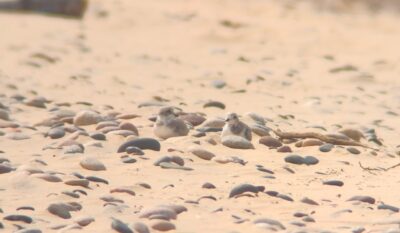
Baby sitting next to B Chick. Photo by Stephanie Owens
One day, I discovered two fledgling chicks sitting near each other in the sand. Bob was nearby, so I wondered if one of those chicks was Baby. After about 10 minutes of preening side by side, one of the chicks stepped up, and its bands revealed it was Baby! The two hung around in proximity for about 15 minutes, and then the other chick stood up, who turned out to be B chick. They then went to the water’s edge, foraging after Bob. Nowadays, whenever I spot Baby or Bob, one or two captive-reared chicks are often right behind them.
The only plovers I have observed in the past four days are Baby, Bob, and the captives. With everyone else having left for their wintering grounds, it’s only a matter of time before our stragglers follow suit. I believe Baby still needs some time at the Point, though, as he is still getting used to this new flying thing. Eventually, he’ll become proficient, but I still have him for a little longer until then.
~ Stephanie Owens
2024 Piping Plover Monitor
Featured photo: Baby on July 24. Photo by Stephanie Owens
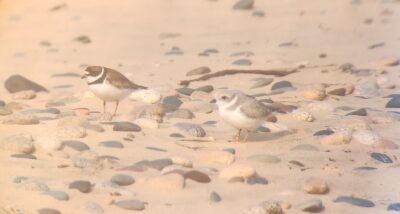
Photo by Stephanie Owens
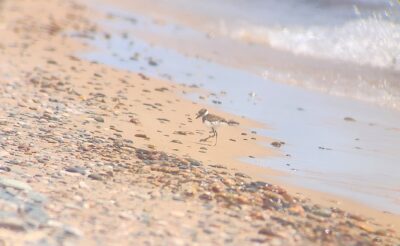
Photo by Stephanie Owens
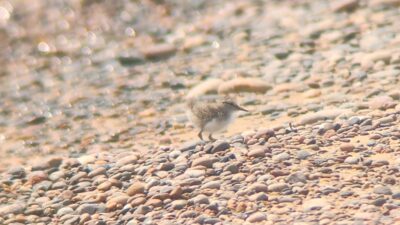
Photo by Stephanie Owens
Piping Plover monitoring is a collaborative effort between Michigan Audubon and Seney National Wildlife Refuge (USFWS).
You can keep up with the 2024 Piping Plover action at WPBO by reading Stephanie’s blog posts and following WPBO’s social media (Facebook, Instagram, and X).
Stephanie Owens: 2024 Piping Plover Monitor
 Stephanie is a native Yooper and a recent graduate of Lake Superior State University. She earned a Bachelor of Science in Conservation Biology and completed her senior thesis on the distribution of per- and polyfluoroalkyl substances in waterways in Eastern Upper Peninsula. Previously, she worked as a Piping Plover monitor in the U.P. for two seasons and conducted Black Tern and habitat surveys during that time as well.
Stephanie is a native Yooper and a recent graduate of Lake Superior State University. She earned a Bachelor of Science in Conservation Biology and completed her senior thesis on the distribution of per- and polyfluoroalkyl substances in waterways in Eastern Upper Peninsula. Previously, she worked as a Piping Plover monitor in the U.P. for two seasons and conducted Black Tern and habitat surveys during that time as well.


